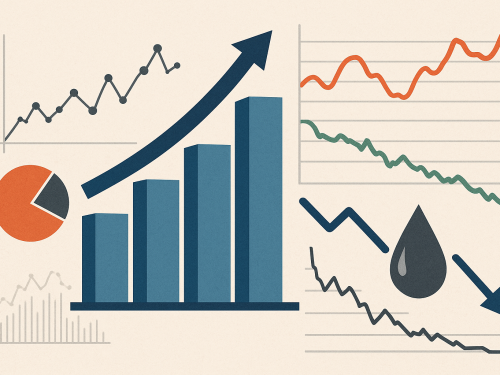News
Share on
Centro Studi Confindustria's photograph to understand the new Italian industrial geography
La Italian manufacturing has always been the flagship of the national economy and continues to be one of the essential pillars of the country's growth. The Industry 2025 Report, drawn up by the Confindustria Centro StudiIt stems from the need to offer an organic, up-to-date and comparable picture of the transformations that have swept through industry in the last decade, in a context marked by economic, health and geopolitical shocks. At the heart of the analysis is the decisive issue of competitiveness: the Report examines in depth the strengths and weaknesses of our production system, on whose performance the country's growth prospects depend.
A unique sector in Europe
La Italian manufacturing has characteristics that make it unique in the international context. It is the most diversified production system in Europe and boasts a propensity to invest that is systematically higher than that of the continent's other major economies. In recent years, moreover, capital strengthening of companies allowed Italy to catch up with the level of capitalisation of German and French companies, potentially improving investment capacity, resilience and competitiveness.
Strong openness to foreign markets is another distinguishing feature: almost half of industrial production is exported. Over the last decade, Italy has recorded export growth in excess of that of its main European competitors, gaining share in international markets and generating a trade surplus that is crucial for the balance of the current account. The report confirms that the success of Italian industry abroad is increasingly due to the quality of its products. Improvements are widespread, but particularly evident in innovation-intensive sectors such as pharmaceuticals.
The unresolved productivity issue
Alongside many positive elements, the report highlights a critical issue that has accompanied Italian manufacturing for over thirty years: weak productivity growth. Within the national economic system, industry is the most dynamic sector, but in comparison with other European manufacturers, its performance is less brilliantmainly due to a negative contribution of total factor productivity.
There are several reasons for this. First of all, the size structure: Italy has a very high proportion of micro and small enterprises and, even among the large ones, a smaller average size than its European competitors. And yet, when we look at medium-large enterprises, an encouraging sign emerges: they are more productive than their German, French and Spanish counterparts. It is therefore the size distributionrather than the quality of the leading companies, curbing the potential of manufacturing in aggregate. Furthermore, the growth of available physical capital is still weak, while the propensity to invest in intangible assets, which has grown significantly in recent years, is lower than that observed in the other major manufacturing countries, especially as regards investment in intellectual property.
Since 2015, Italian manufacturing productivity growth has shown signs of convergence with European competitors, partly due to the more favourable contribution of intangible capital and a finally positive contribution of total factor productivity. Also relevant the qualitative transformation of the production fabricwhich resulted from an intensive selection process that reduced the number of micro enterprises by almost 12%, and the concomitant growth in average size among large companies and the aforementioned capital strengthening.
This growth was mainly driven by the most innovative companies, the so-called 'frontier' companies. At the same time, the distance between the most and least productive companies has increased, and the movement of capital and labour towards higher value-added sectors has remained limited. This has contributed to keeping Italian specialisation concentrated in medium and low-technology-intensive sectors, while other European countries have moved more rapidly towards advanced production.
Finally, theand crisis of the last five years, first health and then energy, have made the reading of both the signs of convergence and their causes less clear, and the dynamics of productivity in Italy have lost ground again.
To sustainably strengthen the productivity dynamic, simultaneous action on several levers is required: supporting innovation and business efficiency at the frontier, promote the dissemination of best management and technological practices between the less productive realities through supply chains, promoting dimensional growth, e facilitate greater convergence of capital and labour towards companies and sectors with greater potential.
Manufacturing in numbers: the country's contribution to growth
The Report confirms that manufacturing is one of the main drivers of Italian growth and clearly quantifies its contribution to the country. Industry generates around 15% of GDP - a share that exceeds one third when considering induced activities - and over 60% of total production.
Manufacturing is also responsible for almost 35% of total investment and 50% of national expenditure on research and developmentsupporting innovation, skilled employment and productivity growth. Added to this is its key role in exports: over 95% of exports are in manufacturing.
Broadening the view and assessing global relevance, Italy confirms itself as a major playerIt is the eighth largest manufacturer in the world and the second largest in Europe, with a highly diversified production model, strongly oriented towards foreign markets and integrated in complex supply chains.
Thematic Insights
The report also delves into two key topics on the basis of academic empirical studies. The first in-depth series analyses the value of skillsflexibility and inclusion as levers for industrial competitiveness: in the light of demographic decline and technological transformation, there is a need for an integrated strategy that expands the employment base through care services and social infrastructure, disseminates good managerial practices for the effective use of digital technologies, and improves institutional efficiency by providing a regulatory framework that fosters labour mobility and innovative investments. The The second series studies the implications of the return of the industrial policyand, emphasising that their effectiveness varies depending on how they are implemented.
Sectoral sheets: the voice of the trade associations
The last chapter of the report complements aggregated analyses with sectoral data at a more granular level and indications gathered from trade associations, which report the perceptions of entrepreneurs on what obstacles, development trajectories and conditions are necessary to continue competing.
Extensive work from which some recurring points emerge:
- Among the obstacles to competitiveness, the cost of energy is mentioned by the associations' 92% as the main critical factor;
- quality, specialisation and technical skills remain distinctive levers of the production system;
- digitisation, sustainability and innovation are the most shared investment priorities;
- many supply chains show a strong international openness and an ability to adapt to technological and geopolitical changes.
For more information download the full report here.


















